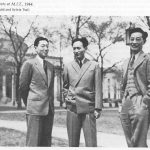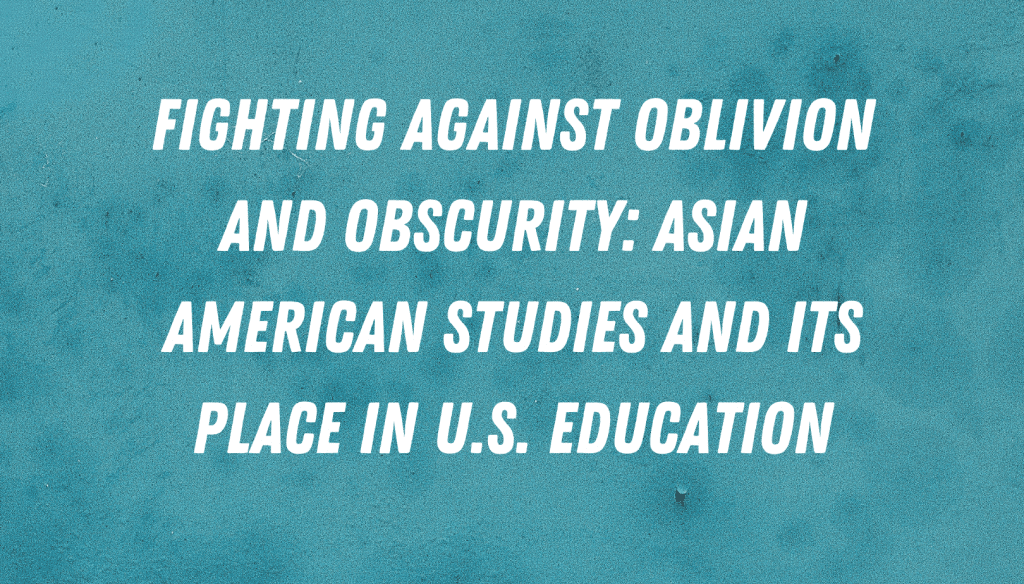
After receiving my two doses of Pfizer, I decided that it was time to depart a bit from my hermetic lifestyle, re-socialize, and gradually reinsert myself back into the society. While meeting new people, I always introduce myself as a graduate student at UT Austin studying the history of Chinese in Mexico. Upon hearing my dissertation topic, people often react with a mix of bewilderment, fascination, and surprise as they have not heard of the existence of a Chinese population in Mexico. Intrigued, people always ask more about my research. Unsurprisingly, one of the most frequent questions is “Why and how did the Chinese end up in Mexico?”
In response, I explain that most of the early Chinese in Mexico came from the United States. In fact, the history of Chinese Mexicans is an offshoot of the broader history of Chinese Americans. Perceiving the inquisitive eyes of my audience, I explain that during the late nineteenth and early twentieth century, Chinese Americans frequently encountered racial violence and systemic discrimination, rendering their lives extremely challenging. In particularly, the Page Act of 1875, the Chinese Exclusion Act of 1882, and the subsequent exclusionary laws against Asian Americans restricted the mobility of the Chinese save for a few who belonged to exempt classes. The laws criminalized and deported Chinese Americans who did not have the required paperwork, effectively making the Chinese the first “illegal aliens” in the United States.[1] Under these harrowing conditions, many Chinese entered Mexico to seek refuge and start new lives.
Before I’m able to proceed and talk more about the Chinese in Mexico, however, people often stop me as they are surprised to hear that the United States, branded as the “nation of immigrants,” at one point had a law called “the Chinese Exclusion Act.” Indeed, so far, none of the people I have talked with, including those from California, have ever heard of such law—a law that fundamentally transformed U.S. immigration policy and regulation, the effects of which are still being felt by tens of millions of people today.[2] Many initially thought I was joking, and others went away with disbelief. Presumably, the humanities education they received in high school and college glossed over the history of Asian Americans, if such history was mentioned at all.
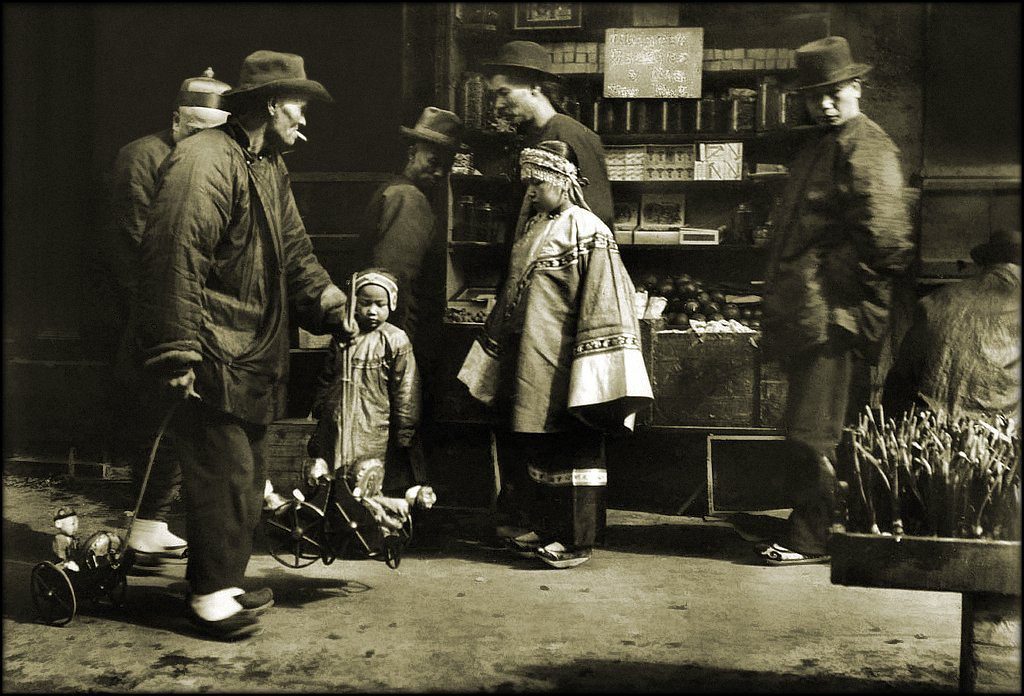
Am I surprised that most Americans have never heard of the Chinese Exclusion Act? Perhaps but the oblivion and the obscurity of Asian American history in U.S. education is no coincidence. In her superbly researched book, Beth Lew-William shows that unlike African Americans who suffered from extralegal violence and Native Americans dispossession, the Chinese mainly suffered from exclusion, or what she termed “violent racial politics.”[3] By shutting the Chinese outside of the borders of the United States and assigning foreignness onto their racial features, white supremacists successfully rendered Asian Americans invisible and made them into perpetual outsiders. The exclusion of Asian Americans directly impacted how their history has been written and taught.
Back when I was in high school, the six-hundred-page textbook we used for our AP U.S. history class, entitled The History of the American People,[4]only contained one or two pages on Asian Americans, a phenomenon that many students across the country have encountered.[5] And even those pages that mentioned Asian Americans privileged the perspectives of white supremacists whose descriptions and caricatures of the Chinese reified and reinforced the notion that Asians did not belong in the United States. Given the peripheral and obscure place of Asian Americans in history textbooks, it is not surprising that the vast majority of people outside the history profession have never heard of the Chinese Exclusion Act.
The erasure and obscuring of Asian American history in the textbooks reflects structural problems of knowledge production and dissemination at the university-level. Since universities train secondary school teachers and professional historians often write or contribute to history textbooks, the lack of Asian American history in K-12 education is rooted in the deficient representation of Asian American studies at the tertiary level. Numerous reports show that institutions of higher education have been slow to support disciplines related to Asian American Studies, further smothering the development of the field and the nurturing of the next-generation of scholars. For instance, with Asian Americans comprising more than twenty percent of its student body, Harvard University has not done nearly enough to support Asian American Studies.[6] It does not have an Asian American Studies department, and faculty whose research focuses on Asian Americans are rare.[7] Amid student protests, the administration hesitantly agreed to do more but no substantial action has been taken so far.[8]
Recent surveys have also found that Asian American students are underrepresented in the humanities,[9] including history, and their numbers have declined rapidly over the past decade.[10] Ironically, around the same time that this decline was happening, the Asian population in the United States and the number of Asian American college students soared.[11] One important factor that led Asian Americans away from the humanities is likely that many of these students found themselves and their history unincluded in the discipline.[12]
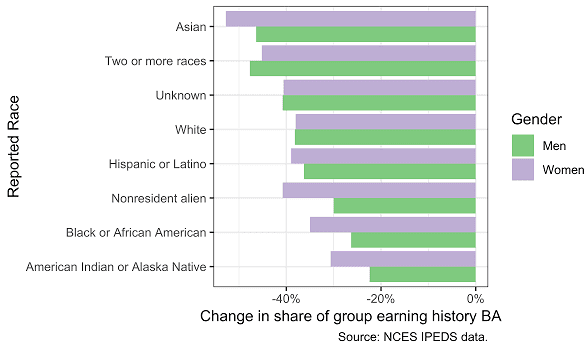
All of these data raises a central question: Why are institutions like Harvard with substantial Asian American populations reluctant to establish and support programs that can potentially appeal to at least a quarter of their students, especially when the students themselves perennially ask for these educational opportunities? I believe that the idea that Asian Americans and Asian American history are peripheral, obscure, and unimportant coupled with the model minority myth has contributed to the reluctance of universities to provide educational resources for studies related to Asian Americans.[13]
The consequences of thrusting Asian American history into oblivion and assigning it a marginal place both inside the textbooks and in the broader educational system are severe and disheartening. If rising anti-Asian violence nationwide in the past year, including the horrific Atlanta spa shootings, is any indication, it is clear that many still perceive Asian Americans as peripheral, dispensable, perpetually foreign, and extraneous to the U.S. society. The marginal place of Asian American history in U.S. education and the underrepresentation of Asian Americans in the humanities surely contributed to the misrepresentation of the wider Asian population in the United States.
Fortunately, over the past few years, several universities have begun to develop Asian American Studies programs following persistent demands from students and the rising anti-Asian incidents in the recent past. In August 2018, Princeton University created a certificate program for Asian American Studies, which increased its course offerings on Asian American studies from one to three classes per semester to five in the spring of that year.[14] At Duke University, after more than twenty years of persistent student protests, the administration finally established an Asian American Studies Program in 2019.[15] In late April of this year, the University of Arizona announced the establishment of an Asian Pacific American Studies Minor as “the result of more than two decades of work and comes at a time of highly visible anti-Asian racism and violence in the United States.”[16]
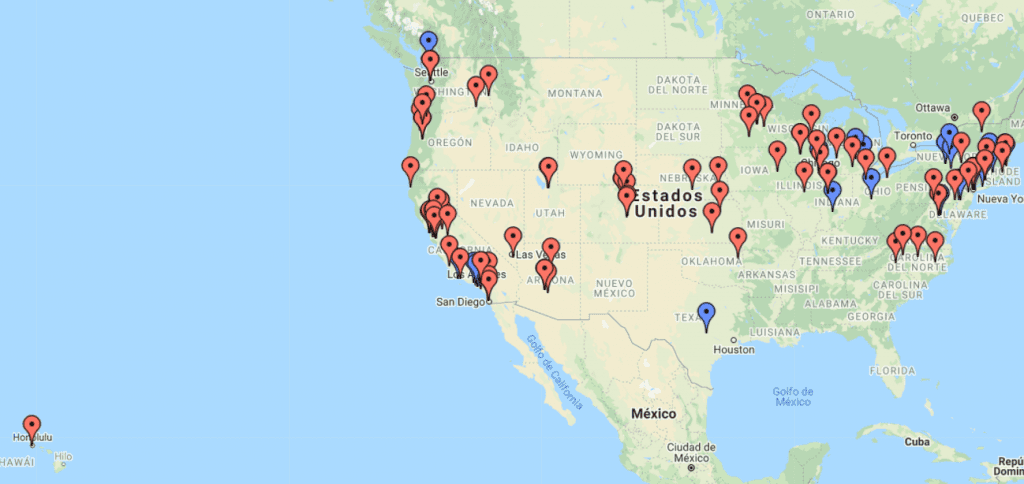
However, as noted by many students and faculty, establishing these programs is just the first step. Often, universities created these programs without adequately supporting them in the long term. Without hiring enough faculty and investing resources, the establishment of new ethnic studies programs frequently means that the existing faculty have to take on additional burdens, which leads to high rates of attrition and burnout.[17] Indeed, some programs are comprised of just one or a handful of tenured or tenure-track faculty members and offer a very limited range and number of courses.[18] Given these data, the future of these inchoate Asian American studies programs at Princeton, Duke, and Arizona is still unknown.
Despite these challenges, many students, especially Asian Americans, were thrilled to see that classes related to Asian American studies were being offered for the first time. Some were also surprised to learn that there is so much intellectual breadth and depth in Asian American Studies as textbooks in secondary schools rarely provide such information.[19] Like other ethnic studies programs, however, Asian American Studies are not just for Asian American students. The discipline speaks to all who want to have a deeper understanding of the racial and ethnic diversity of the United States and learn about American history through a different perspective. It can enhance interethnic understandings and solidarity as well as provide an ideal platform for global studies and migration policy studies. Ultimately, such knowledge would be useful for anyone working in any field.[20]
Asian American Studies programs are conspicuously rare in the southern United States with only a handful of universities offering formal programs. In an expansive geographical space stretching from the coasts of South Carolina and Florida to New Mexico, it appears that the University of Texas at Austin is the only institution that offers a program in Asian American studies (see figure 2).[21] Currently, the Center for Asian American Studies at UT Austin offers both a major and a minor in Asian American Studies as well as a graduate portfolio program.[22] As the Asian American population continues to grow at both the state and national level and as contacts between Asia and the United States become increasingly common in a globalizing world,[23] I have no doubt that the demand for Asian American studies will rise accordingly. I am certain that the Center for Asian American Studies at UT Austin will increase in its importance as an academic unit for students of diverse backgrounds in the years to come.
[1] Mae Ngai, Impossible Subjects: Illegal Aliens and the Making of Modern America (Princeton, N.J: Princeton University Press, 2004).
[2] Erika Lee, At America’s Gates: Chinese Immigration During the Exclusion Era, 1882-1943 (Chapel Hill: The University of North Carolina Press, 2003).
[3] Beth Lew-Williams, The Chinese Must Go: Violence, Exclusion, and the Making of the Alien in America (Cambridge, Massachusetts: Harvard University Press, 2018), 7.
[4] “Out of Many: The History of the American People,” Amazon, accessed May 10, 2021, https://www.amazon.com/Out-Many-American-Faragher-2005-06-16/dp/B01K2O6E12/ref=sr_1_13?dchild=1&keywords=Out+Of+Many%3A+A+History+of+the+American+People&qid=1620665175&s=books&sr=1-13
[5] “Why Are Asian Americans Missing from Our Textbooks?” Pacific Standard, March 16, 2017, accessed May 10, 2021, https://psmag.com/news/why-are-asian-americans-missing-from-our-textbooks
[6] “Faculty Page of the Department of History,” Harvard University, accessed May 17, 2021, https://history.fas.harvard.edu/faculty_alpha
[7] As of May 17, 2019, Ju Yon Kim, a professor of English, remains the only Harvard faculty on Asian American studies. See “Ju Yon Kim is Building from the Inside,” The Harvard Crimson, May 17, 2019,accessed May 18, 2021, https://www.thecrimson.com/article/2019/5/17/harvards-only-asian-american-studies-professor/#:~:text=When%20Kim%20took%20her%20job,Asian%20American%20Studies%20faculty%20member.&text=That%20changed%20when%2C%20during%20her,Asian%20American%20and%20feminist%20literature; See also; “Students and Alumni Call For Ethnic Studies Department in Wake of Professors’ Departures,” The Harvard Crimson, February 4, 2019, accessed May 18, 2021, https://www.thecrimson.com/article/2019/2/4/ethnic-studies-professors-departures; “Search for Harvard Ethnic Studies Faculty Suspended Indefinitely Due to Pandemic,” The Harvard Crimson, April 16, 2020, accessed May 18, 2021, https://www.thecrimson.com/article/2020/4/16/ethnic-studies-search-suspended/
[8] “Will Harvard continue to fail Asian Americans—or will it learn from the past?,” The Washington Post, February 12, 2019, accessed May 10, 2021, https://www.washingtonpost.com/opinions/will-harvard-continue-to-fail-asian-americans–or-will-it-learn-from-the-past/2019/02/12/80fb1492-2f04-11e9-86ab-5d02109aeb01_story.html; “At Harvard, Asian-American students urge diversity efforts beyond admissions,” The Boston Globe, February 9, 2019, accessed May 10, 2021, https://www.bostonglobe.com/metro/2019/02/09/harvard-asian-american-students-urge-diversity-efforts-beyond-admissions/TMzB9hZvzH6VxJDA5h9WAN/story.html “Harvard students call for ethnic studies program after Asian American Studies professors depart,” The Daily Pennsylvanian, February 6, 2019, accessed May 10, 2021, https://www.thedp.com/article/2019/02/harvard-asian-american-program-ethnic-studies-penn-bacow-asam-tenure. See also “Students and faculty reflect on the status of Asian American studies at Yale,” Yale News, May 2, 2021, accessed May 17, 2021, https://yaledailynews.com/blog/2021/05/02/students-and-faculty-reflect-on-the-status-of-asian-american-studies-at-yale/
[9] “Racial/Ethnic Distribution of Advanced Degrees in the Humanities,” American Academy of Arts and Sciences, accessed May 17, 2021, https://www.amacad.org/humanities-indicators/higher-education/racialethnic-distribution-advanced-degrees-humanities; “Racial/Ethnic Distribution of Bachelor’s Degrees in the Humanities,” American Academy of Arts and Sciences, accessed May 17, 2021, https://www.amacad.org/humanities-indicators/higher-education/racialethnic-distribution-bachelors-degrees-humanities
[10] “The History BA Since The Great Recession The 2018 AHA Majors Report,” Perspectives on History, November 26, 2018, accessed May 10, 2021, https://www.historians.org/publications-and-directories/perspectives-on-history/december-2018/the-history-ba-since-the-great-recession-the-2018-aha-majors-report
[11] “Asian Americans are the fastest-growing racial or ethnic group in the U.S.,” Pew Research Center, April 9, 2021, accessed May 17, 2021, https://www.pewresearch.org/fact-tank/2021/04/09/asian-americans-are-the-fastest-growing-racial-or-ethnic-group-in-the-u-s/; “Asian American and Pacific Islander Students in Higher Education,” The Postsecondary National Policy Institute, May 11, 2021, accessed May 17, 2021, https://pnpi.org/asian-americans-and-pacific-islanders/#
[12] “Why are Asian Students Leaving the Humanities?” AsAmNews, June 9, 2020, accessed May 10, 2021, https://asamnews.com/2020/06/09/asian-students-in-humanities-struggle-to-get-their-parents-to-accept-their-major/
[13] On model minority myth see Madeline Y. Hsu, The Good Immigrants: How the Yellow Peril Became the Model Minority (Princeton, NJ: Princeton University Press, 2015) and Ellen D. Wu, The Color of Success: Asian Americans and the Origins of the Model Minority (Princeton, NJ: Princeton University Press, 2014).
[14] “University approves certificate program in Asian American studies,” Princeton University, April 30, 2018, accessed May 17, 2021, https://ams.princeton.edu/news/2017-18/university-approves-certificate-program-asian-american-studies
[15] “After 50 years, Asian American studies programs can still be hard to find,” NBC News, June 27, 2019, accessed May 10, 2021, https://www.nbcnews.com/news/asian-america/after-50-years-asian-american-studies-programs-can-still-be-n1022331
[16] “New Asian Pacific American Studies Minor Launches at ‘Vital Time in Our History’,” University of Arizona News, April 28, 2021, accessed May 17, 2021, https://news.arizona.edu/story/new-asian-pacific-american-studies-minor-launches-vital-time-our-history
[17] “Underfunded, Underrepresented Despite the lack of formal departments, ethnic studies programs remain vital for Northwestern students,” North by Northwestern, n.d., accessed May 18, 2021, https://northbynorthwestern.com/underfunded-underrepresented/; “Asian American faculty, staff and students call for establishment of Asian American studies program,” The Dartmouth, Mar 29, 2021, accessed May 18, 2021, https://www.thedartmouth.com/article/2021/03/asian-american-faculty-staff-and-students-call-for-establishment-of-asian-american-studies-program; “Tenure Denied,” Inside Higher Ed, May 17, 2016, accessed May 18, 2021, https://www.insidehighered.com/news/2016/05/17/campus-unrest-follows-tenure-denial-innovative-popular-faculty-member-color
[18] “Students, faculty continue decades-long struggle to uplift Asian American Studies,” February 18, 2021, accessed May 17, 2021, https://www.cavalierdaily.com/article/2021/02/students-faculty-continue-decades-long-struggle-to-uplift-asian-american-studies; “Asian American Studies prof.’s departure reignites concern over lack of support for program,” The Daily Pennsylvanian, accessed May 17, 2021, https://www.thedp.com/article/2021/03/david-eng-leaving-penn-asian-american-studies-program-concerns; See also “Asian American Studies Faculty Page,” Dartmouth College, accessed May 17, 2021, https://asian-american.dartmouth.edu/people; “Asian American Studies Faculty Page,” University of Pennsylvania, https://asam.sas.upenn.edu/index.php/people/faculty; “AASP Faculty,” Cornell University, accessed May 17, 2021, https://asianamericanstudies.cornell.edu/faculty
[19] “Racist attacks revive Asian American studies program demand,” AP News, May 15, 2021, accessed May 17, 2021, https://apnews.com/article/race-and-ethnicity-health-coronavirus-pandemic-lifestyle-education-75e52566e991e492d60b55ec7c38830a
[20] “Without Asian American Studies, We Can’t Understand American Racism,” The Chronicle of Higher Education, April 5, 2021, accessed May 17, 2021, https://www.chronicle.com/article/without-asian-american-studies-we-cant-understand-american-racism; “New Asian Pacific American Studies Minor Launches at ‘Vital Time in Our History’,” University of Arizona News, April 28, 2021, accessed May 17, 2021, https://news.arizona.edu/story/new-asian-pacific-american-studies-minor-launches-vital-time-our-history
[21] See “Asian American Studies,” Google Map, accessed May 18, 2021, https://www.google.com/maps/d/u/0/viewer?oe=UTF8&ie=UTF8&msa=0&mid=1gheEEJScqCrdG-qp1F6dO8dV4aw&ll=36.20718669030337%2C-114.427031&z=4
[22] “Center for Asian American Studies,” The University of Texas at Austin, accessed May 18, 2021, https://liberalarts.utexas.edu/aas/index.php
[23] Texas, behind California, has the second largest increase in Asian population among all the states in the past decade. See “Asian Americans are the fastest-growing racial or ethnic group in the U.S.,” Pew Research Center, April 9, 2021, accessed May 17, 2021, https://www.pewresearch.org/fact-tank/2021/04/09/asian-americans-are-the-fastest-growing-racial-or-ethnic-group-in-the-u-s/

